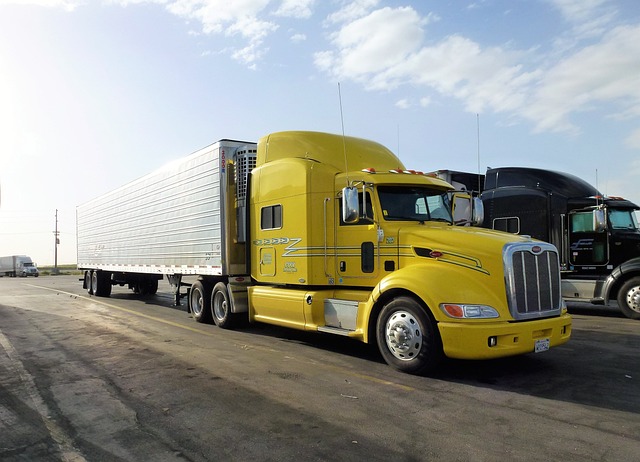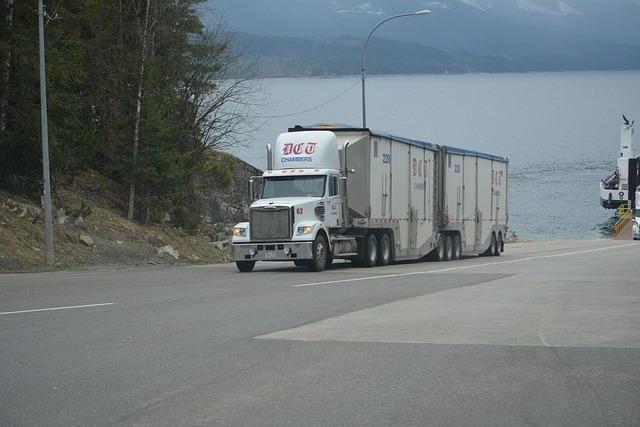Using a commercial vehicle for personal purposes requires understanding the limitations of standard business insurance. Non-business use insurance fills coverage gaps, offering protection for incidents like accidents or damage during personal trips, but it comes with specific exclusions, deductibles, and usage restrictions. It's crucial to comprehend these details to avoid financial exposure and ensure peace of mind. Organizations should update policies, offer specialized non-business use insurance, and provide safety training to protect drivers and mitigate risks associated with personal vehicle use.
In today’s mobile society, many drivers use their commercial vehicles for personal trips. However, navigating these dual purposes presents unique challenges. This article explores the importance of protecting drivers during personal use of commercial vehicles and delves into non-business use insurance: its coverage, limitations, and how it can mitigate risks. We’ll discuss common hazards faced by such drivers and offer strategies to enhance safety and ensure adequate protection. Understanding non-business use insurance is crucial for minimizing liabilities and fostering peace of mind.
Understanding Non-Business Use Insurance: Coverage and Limitations

When using a commercial vehicle for personal purposes, it’s crucial to understand the implications on your insurance coverage. Non-business use insurance is designed to fill the gap when a vehicle is taken off the clock and onto personal roads. This type of coverage extends protection beyond traditional business activities, acknowledging that vehicles can serve dual purposes. However, it’s essential to grasp its limitations. While non-business use insurance provides some level of protection for drivers during personal trips, it often comes with specific exclusions and deductibles. These may include restrictions on the type of usage, such as prohibiting driving for commercial or business-related activities even outside regular work hours.
Moreover, coverage might not extend to all types of incidents. For instance, if a driver is involved in an accident while using the vehicle for personal reasons, the insurance policy’s terms will dictate what’s covered and what isn’t. Some policies may exclude certain high-risk scenarios or have limitations on liability and repair costs. Understanding these nuances is vital to ensure adequate protection during non-business use, giving drivers peace of mind and financial security in unforeseen circumstances.
Why Protecting Drivers is Crucial During Personal Trips

Protecting drivers during personal use of commercial vehicles is not just a matter of compliance; it’s a vital step in ensuring safety and mitigating risks. When a driver uses a company vehicle for personal trips, they’re still at risk of accidents, damages, or even legal issues. Non-business use insurance plays a crucial role here by bridging the gap between work and personal life. It provides coverage for unexpected events like collisions, theft, or accidental damage to the vehicle, offering peace of mind during these personal journeys.
Moreover, this type of insurance can protect drivers from financial burdens that might arise from personal accidents while behind the wheel of a commercial vehicle. By having the right non-business use insurance in place, companies ensure their drivers are safeguarded, fostering a culture of responsibility and care beyond the confines of official duties. This not only benefits individual drivers but also contributes to the overall safety and efficiency of the organization’s operations.
Common Risks Faced by Drivers in Commercial Vehicles for Personal Use

Drivers who use their commercial vehicles for personal purposes face unique risks that often fall outside traditional business insurance policies. When a vehicle is used for non-business activities, it can be subject to different types of hazards not encountered on the job. These include accidents while running errands, during leisure trips, or commuting, where the context and responsibilities differ significantly from standard work-related driving.
One significant risk is the lack of coverage under the company’s insurance policy for personal use. Non-business use insurance often has different terms, exclusions, and limitations. Drivers may find themselves financially vulnerable if they are involved in an accident while using the vehicle for personal reasons since their personal insurance policies might not cover commercial vehicles or may offer inadequate protection in such scenarios.
Strategies to Enhance Safety and Ensure Adequate Insurance for Non-Business Driving

To enhance safety and ensure adequate protection for drivers using commercial vehicles for personal purposes, several strategies can be implemented. Firstly, it’s crucial to review and update vehicle policies to accommodate non-business driving. This includes specifying conditions, defining coverage limits, and outlining exclusions related to personal use. Many insurance providers offer specialized policies tailored for non-business use insurance, which can provide comprehensive protection. These policies often include liability, collision, and comprehensive coverage options, ensuring drivers are adequately insured against potential risks and damages.
Additionally, educating drivers about safe driving practices specific to personal vehicle usage is essential. This involves promoting defensive driving techniques, emphasizing the importance of regular vehicle maintenance, and encouraging adherence to traffic rules and regulations. Regular safety training sessions can help drivers anticipate hazards, react promptly, and minimize risks while behind the wheel for non-business purposes.
Protecting drivers during personal use of commercial vehicles is a multifaceted challenge that requires a deep understanding of non-business use insurance policies and their limitations. While these policies offer essential coverage, they often come with gaps that can leave drivers vulnerable. Recognizing the unique risks associated with personal trips in commercial vehicles, such as increased liability and limited personal injury protection, is crucial. Implementing robust safety strategies, including regular vehicle maintenance, driver training, and the use of advanced safety features, can significantly enhance security. Ultimately, ensuring adequate insurance for non-business driving involves a combination of informed decision-making and proactive safety measures to safeguard drivers and mitigate potential risks.
